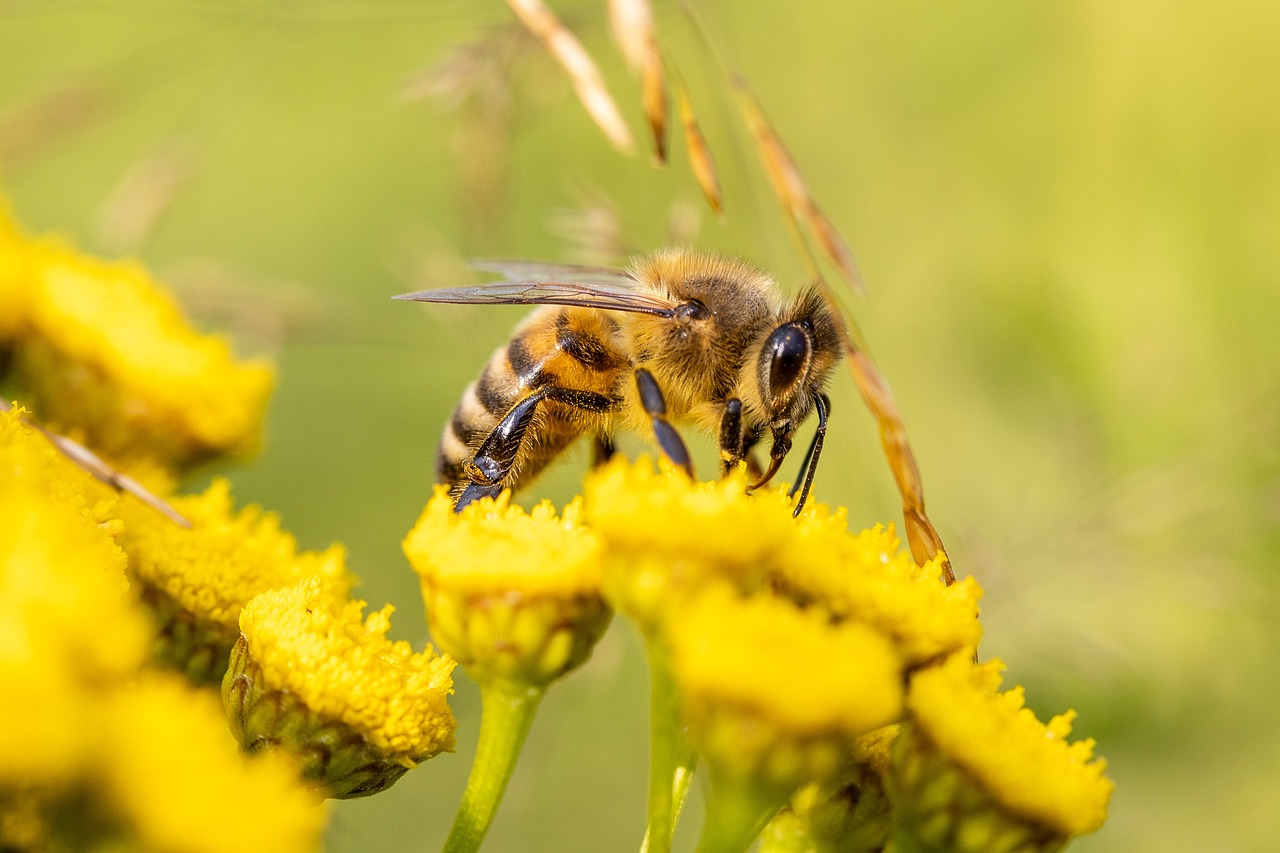Nature has been running its own comic book universe for millions of years, crafting creatures with abilities so extraordinary they make superheroes look ordinary. While we’re busy inventing fictional characters with amazing powers, the real world is crawling with tiny beasts that possess genuine superpowers that would make Spider-Man jealous. These aren’t mythical creatures from fantasy novels – they’re living, breathing animals sharing our planet right now.
The Tardigrade: The Ultimate Survivor

Meet the tardigrade, a microscopic creature that looks like a chubby bear crossed with a vacuum cleaner. These water bears, as they’re affectionately called, are literally indestructible. They can survive being boiled, frozen to nearly absolute zero, blasted with radiation 1,000 times stronger than what would kill a human, and even launched into the vacuum of space.
What makes them so tough? Tardigrades can enter a state called cryptobiosis, essentially becoming a dried-out husk that can wait decades for water to return. Scientists have revived tardigrades that were dormant for over 30 years. When conditions become harsh, they simply shut down all biological processes and wait it out like the ultimate procrastinator who actually succeeds.
The Bombardier Beetle: Nature’s Chemical Warfare Expert
The bombardier beetle carries around its own personal defense system that would make military engineers weep with envy. When threatened, this little insect can fire a boiling hot chemical spray from its rear end with pinpoint accuracy. The spray reaches temperatures of 100°C (212°F) – literally boiling water temperature.
This isn’t just a simple squirt gun either. The beetle mixes two chemicals in a special chamber inside its body, creating an explosive reaction that launches the defensive spray at speeds of up to 500 feet per second. It’s like having a tiny flamethrower attached to your backside, except way more effective and considerably more terrifying to anything trying to eat you.
The Mantis Shrimp: The Ocean’s Heavyweight Champion
Don’t let the word “shrimp” fool you – the mantis shrimp is basically an underwater superhero with anger management issues. These colorful crustaceans pack a punch that can shatter aquarium glass and crack crab shells like walnuts. Their club-like appendages strike with the force of a bullet, accelerating at the same rate as a gunshot.
But their fighting skills aren’t their only superpower. Mantis shrimp have the most complex eyes in the animal kingdom, capable of seeing 16 different types of color receptors compared to our measly three. They can see ultraviolet, visible, and polarized light all at once, making our human vision look like looking through a dirty window while squinting.
The Electric Eel: Living Lightning Bolt
The electric eel isn’t actually an eel at all – it’s a type of fish that decided to become a living battery. These South American swimmers can generate electrical discharges of up to 800 volts, enough to power multiple household light bulbs or knock out a horse. They’re basically swimming tasers with attitude.
Their bodies contain thousands of specialized cells called electrocytes that work like biological batteries stacked in series. When hunting or defending themselves, they can discharge this stored electricity in milliseconds. It’s like having a built-in defibrillator, except instead of saving lives, it’s designed to end them – at least if you’re a fish.
The Gecko: Gravity-Defying Wall Crawler
Geckos make Spider-Man look like an amateur when it comes to wall-crawling abilities. These small lizards can walk up glass windows, hang upside down from ceilings, and stick to virtually any surface without breaking a sweat. Their secret lies in millions of tiny hairs called setae on their toe pads, each one splitting into even smaller branches.
These microscopic hairs interact with surfaces at the molecular level through something called van der Waals forces. It’s so effective that a gecko could theoretically hang from a ceiling by a single toe. Scientists have been trying to replicate this technology for years, leading to the development of gecko-inspired adhesives and climbing equipment.
The Archerfish: Underwater Sniper
The archerfish has turned spitting into an art form that would make professional marksmen jealous. This aquatic sharpshooter can accurately shoot jets of water up to six feet above the water surface to knock insects off branches and into the water where they become lunch. Their accuracy is so precise they rarely miss their target.
What makes this even more impressive is that they have to account for light refraction when aiming through water. The archerfish instinctively calculates the apparent position versus the actual position of their prey, solving complex physics problems that would require us to use calculators. They’re basically underwater mathematicians with excellent aim.
The Honeybee: Master Navigator and Communicator

Honeybees possess a navigation system that puts GPS to shame. They can travel up to five miles from their hive, visit hundreds of flowers, and still find their way home with perfect accuracy. They use the position of the sun, landmarks, and even the Earth’s magnetic field as reference points for their internal compass.
But navigation is just one of their superpowers. Bees communicate the location of food sources through an intricate dance language that conveys distance, direction, and even the quality of the nectar source. It’s like having a built-in social media platform where instead of posting photos of your lunch, you’re giving detailed GPS coordinates to the best restaurants in town.
The Vampire Bat: Flying Blood Bank Specialist
Vampire bats have perfected a feeding strategy so specialized it’s almost respectful in its efficiency. Their saliva contains a natural anticoagulant called draculin (yes, really) that keeps blood flowing while they feed. They also have heat sensors so sensitive they can detect the warm blood vessels just beneath their prey’s skin.
These flying physicians can consume up to half their body weight in blood during a single feeding session. What’s even more remarkable is their social behavior – vampire bats will share blood with hungry colony members through regurgitation, essentially running a blood bank based on reciprocal altruism. It’s like having a neighborhood food sharing program, except considerably more macabre.
The Pistol Shrimp: Sonic Boom Generator

The pistol shrimp creates one of the loudest sounds in the ocean using nothing but its oversized claw. When it snaps its claw shut, it creates a cavitation bubble that collapses with such force it produces a sonic boom reaching 218 decibels – louder than a gunshot. The collapsing bubble briefly reaches temperatures of nearly 5,000 Kelvin, almost as hot as the sun’s surface.
This underwater sonic weapon is used both for hunting and communication. The shockwave can stun or kill small fish, making dinner easy to catch. Some species of pistol shrimp are so loud they interfere with submarine sonar systems, proving that sometimes the smallest creatures pack the biggest punch.
The Leafcutter Ant: Agricultural Engineers
Leafcutter ants don’t actually eat the leaves they cut – they’re running sophisticated fungus farms that would make agricultural scientists envious. These tiny farmers cut leaves, chew them into mulch, and use this material to cultivate specialized fungi that serve as their primary food source. They’ve been practicing sustainable agriculture for millions of years before humans even discovered fire.
Their farming operation includes quality control specialists, waste management systems, and even antibiotic production to protect their crops from harmful bacteria. Each colony can process the equivalent of several pounds of vegetation daily, making them some of the most efficient farmers on the planet. They’re basically running an organic farm with a workforce that would make Amazon jealous.
The Mimic Octopus: Master of Disguise

The mimic octopus is nature’s ultimate method actor, capable of impersonating over 15 different marine species with stunning accuracy. It can change not just its color and texture, but also its body shape and behavior to mimic flatfish, lionfish, stingrays, and even sea snakes. This shapeshifting ability is so convincing that even marine biologists sometimes have trouble telling the difference.
What makes this performance even more impressive is the intelligence required to choose which animal to mimic based on the threat it’s facing. When confronted by a predator that fears sea snakes, it becomes a sea snake. When facing something that avoids flatfish, it flattens out and glides along the sea floor. It’s like having a costume closet in your DNA and the acting skills to make it believable.
The Monarch Butterfly: GPS Migration Marvel

Monarch butterflies accomplish one of nature’s most incredible feats of navigation, traveling up to 3,000 miles from Canada to Mexico using a multi-generational relay system. Individual butterflies that have never made the journey before somehow know exactly where to go, following the same routes and even returning to the same trees their great-great-grandparents used.
They navigate using the sun’s position, magnetic fields, and environmental cues with a precision that defies explanation. The most mind-blowing part? The butterflies that make the return journey in spring are several generations removed from those that made the original trip south. It’s like having a family GPS system encoded in your genes that works across multiple lifetimes.
The Conclusion: Nature’s Hidden Superpowers
These remarkable creatures prove that the most incredible superpowers aren’t found in comic books – they’re crawling, swimming, and flying all around us. From tardigrades that laugh in the face of extinction to mantis shrimp that see colors we can’t even imagine, nature has spent millions of years perfecting abilities that seem almost too fantastic to be real.
Next time you swat at a bee or step around an ant, remember you’re in the presence of creatures with genuine superpowers that put our greatest technological achievements to shame. Who needs cape-wearing heroes when the real world is already full of amazing creatures that make fiction look boring by comparison?
